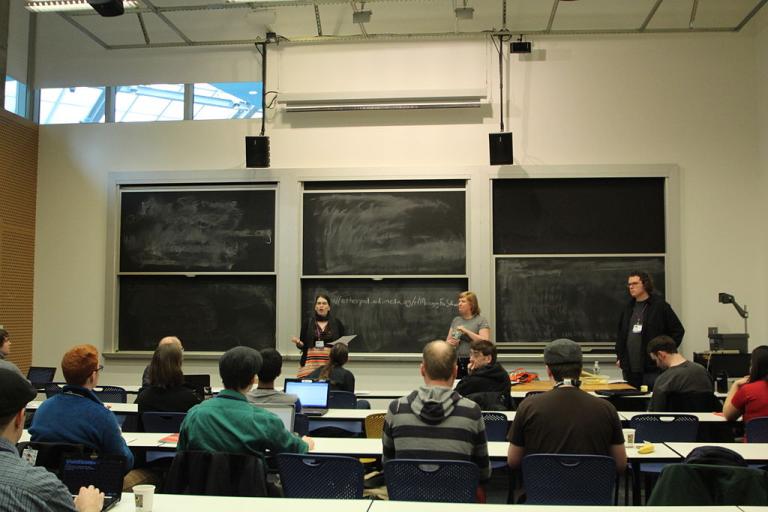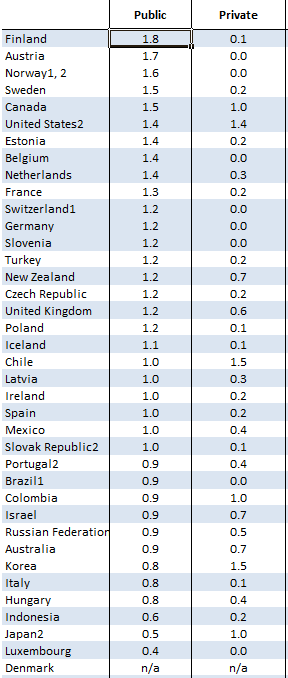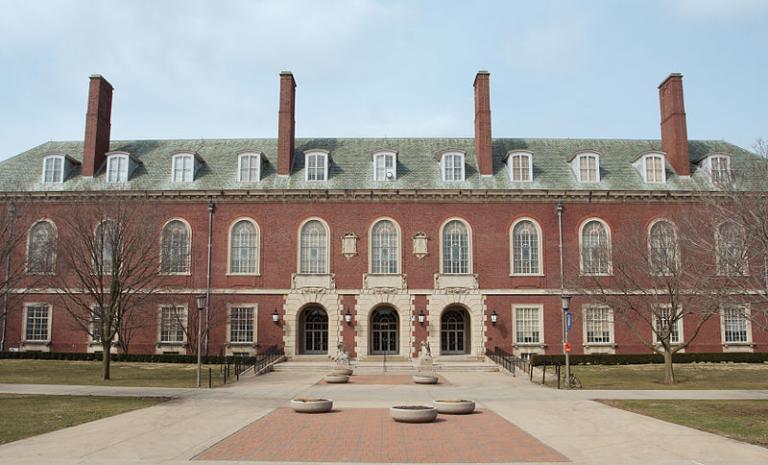According to the OECD’s Education at a Glance, the United States sits right in the middle of the pack when it comes to total public education spending, on primary, secondary, and tertiary levels, compared to other developed nations, as a percentage of GDP. Specifically, the United States ranks 20th out of 38 nations ranked, based on 2012 data. (The publication is dated 2015, so I was also surprised that the data is old.)
But here’s a question for readers:
where do you think the United States ranks, for tertiary (university) education, on the same measure of public spending as a percent of GDP?
C’mon, make a guess.
Surely they’re pretty low, right?
After all, the tuition levels are sky-high.
Here’s the answer:
The United States ranks fifth, at 1.4% of GDP. Sweden and Canada slightly edge us out at 1.5%. France and Germany, also touted for free education, spend 1.3% and 1.2% of GDP, respectively.
Here’s the full list:
(The footnote, by the way, indicates that R&D funding at major university research funding is excluded.) Here’s the URL for this table: http://dx.doi.org/10.1787/888933283959.
Of course, the catch is that the U.S. spends almost an equal amount of private (e.g., student and parent) money, a situation that is infrequent elsewhere, where private costs are much lower, especially in Europe, or even nil, as in Germany. (In Switzerland and Norway, the 0 for private spending should properly be a “data not provided” if I understood the footnotes correctly.) It’s also not stated, so far as I can tell, whether these spending figures include government spending on student living expenses.
Now, this isn’t a new table, but it’s worth understanding this context when evaluating calls for greater public spending on education. Or, as I once wrote, “Everyone wants free college, ‘just like Europe,’ but no one wants the European college system.” — that is, the Europeans provide their “free college” cost-effectively by requiring a rigorous admissions test for entry and keeping the universities very low-frills compared to the United States.
Incidentally, does this imply that the U.S. is doing a lot worse at the other levels? The OECD doesn’t prepare that breakdown, and it’d really require more data anlaysis, particularly in terms of the proportion that’s school-aged in the first place. In addition, I believe that one of the key issues is that, on a per-student annual spending basis, the U.S. likewise ranks high (see table B1.2 in the full report – the U.S. is 4th), but the total spending for other countries includes, as “primary education,” some number of years of preschool/daycare spending.
Image: “LibrePlanet 2014 27” by Lionel Allorge – Own work. Licensed under CC BY-SA 3.0 via Wikimedia Commons – http://commons.wikimedia.org/wiki/File:LibrePlanet_2014_27.jpg#mediaviewer/File:LibrePlanet_2014_27.jpg














